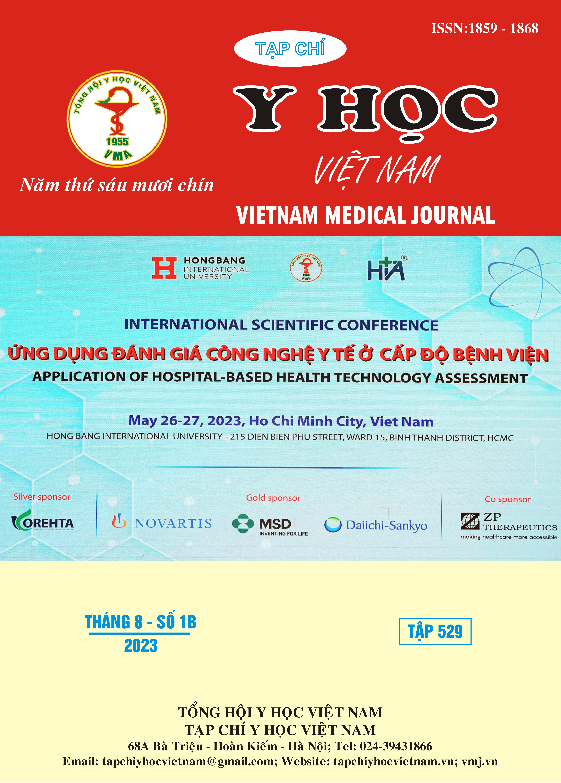ASSOCIATED FACTORS AMONG FEMALE PATIENTS WITH DEPRESSIVE EPISODES AND HYPOACTIVE SEXUAL DESIRE IN BACH MAI HOSPITAL
Main Article Content
Abstract
Background: Hypoactive sexual desire is a common symptom in female patients with depressive episodes, related to many different pathophysiological and social factors. Objectives: To analyse some factors related to hypoactive sexual desire in female patients with depression. Subjects and research methods: A cross-sectional descriptive study of 151 female patients with depressive episodes who were treated inpatient and outpatient at Bach Mai Hospital from August 2022 to May 2023, univariate analysis and multivariate logistic regression analysis to identify a number of related factors. Results: The rate of hypoactive sexual drive in female patients with depression was 71.5%. The severity of depression increased the risk of hypoactive sexual drive by 12,486 times compared with the group of mild to moderate depression (p=0.006, 95%CI: 2.062 – 75.618). Menopausal or pre-menopausal patients have the ability to hypoactive sexual drive 8,263 times higher than non-menopausal patients (p<0.001, 95%CI: 2.792 – 24,458). The age group over 40 has a risk of hypoactive sexual drive 2,858 times higher than the age group 40 and younger (p=0.015, 95%CI: 1,228 – 6.651). In addition, the stress factor and the duration of the disease are also associated with hypoactive sexual drive in female patients with a depressive episode with statistical significance with p<0.001. There was no association between hypoactive sexual drive and education level (p=0.622), marital status (p=0.193), physical disease (p=0.495), number of children (p=0.790), million psychosis (p=0.413), suicidal ideation, behavior (p=0.497), history of medication use (p=0.612) or subject of treatment (p=0.302). Conclusion: Hypoactive sexual desire was popular in female patients with depression and was related to age, menopausal status, stress factors, depression level and duration of illness.
Article Details
Keywords
depressive episode, hypoactive sexual desire in female, associated factors
References
2. WHO. Depression and Other Common Mental Disorder. Accessed April 28, 2022. https://apps.who.int/iris/bitstream/handle/10665/254610
3. LourençO M, Azevedo LP, Gouveia JL. Depression and Sexual Desire: An Exploratory Study in Psychiatric Patients. J Sex Marital Ther. 2010;37(1):32-44. doi:10.1080/0092623X.2011.533578
4. Sreelakshmy K, Velayudhan R, Kuriakose D, Nair R. Sexual dysfunction in females with depression: a cross-sectional study. Trends Psychiatry Psychother. 2017;39(2):106-109. doi:10.1590/2237-6089-2016-0072
5. Laumann EO, Paik A, Rosen RC. Sexual Dysfunction in the United StatesPrevalence and Predictors. JAMA. 1999;281(6):537-544. doi:10.1001/jama.281.6.537
6. Casper RC, Redmond DE Jr, Katz MM et al. Somatic Symptoms in Primary Affective Disorder: Presence and Relationship to the Classification of Depression. Arch Gen Psychiatry. 1985;42(11):1098-1104. doi:10.1001/archpsyc.1985.01790340082012
7. Basson R, Gilks T. Women’s sexual dysfunction associated with psychiatric disorders and their treatment. Womens Health Lond Engl. 2018;14:1745506518762664. doi:10.1177/1745506518762664
8. Raisanen JC, Chadwick SB, Michalak N, van Anders SM. Average Associations Between Sexual Desire, Testosterone, and Stress in Women and Men Over Time. Arch Sex Behav. 2018;47(6):1613-1631. doi:10.1007/s10508-018-1231-6


